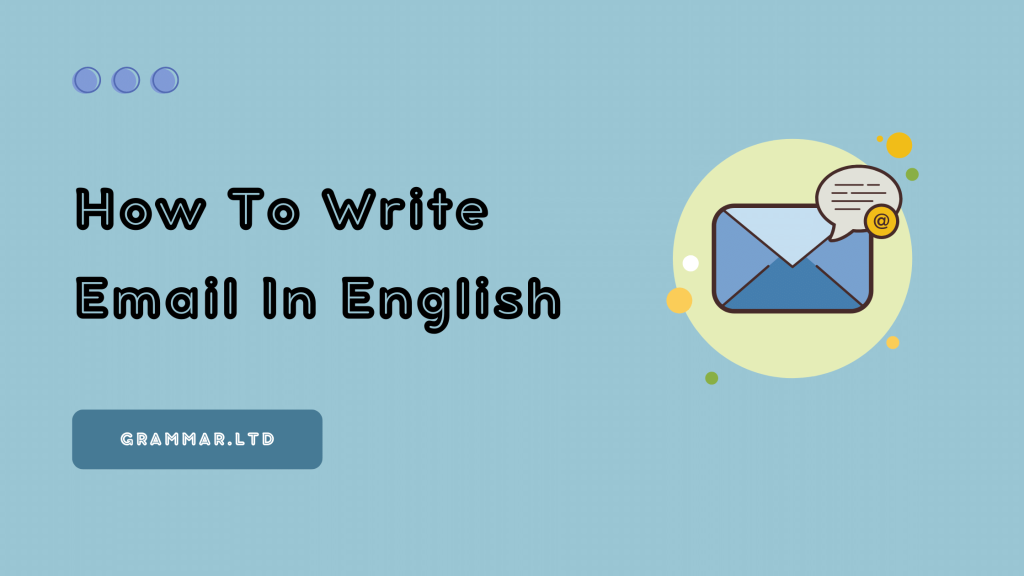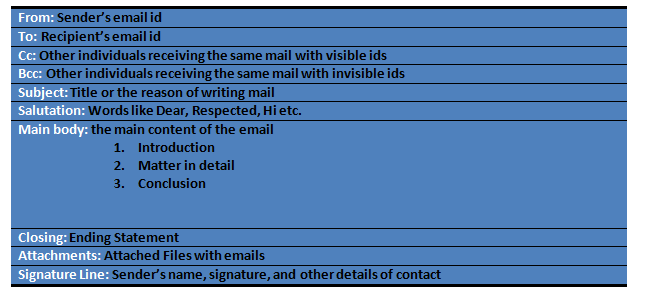When it comes to the list of means of communication that have been leading ever since their release, email is one of the leading names. Emails are the best at what they do, providing you with a means to convey your message to the receiver.

However, many ambiguities cover the topic when writing an email. With the change and evolution in our society, the formats and rules of emails also change from time to time. Therefore, learning how to write an email correctly is a necessity.
In this article, we will dive deep into how to write emails in English and ensure you stand out from the crowd! Whether you are a student, freelancer, professional, or more, our article will help you get the best out of writing emails. Furthermore, we have also covered email rules, types, and more.
So, let’s get into the details below.
Types of Emails:
Emails are similar to most other means of communication, such as a letter. You either send a letter to someone that is a social companion, such as family, friends, etc., or an authority or institution, such as your school or printing press, to convey a message to them.
Since there are two types of audiences that you can send your email to, there are two types of emails that you are going to have to learn about. These two types of emails are:
- Formal Emails
- Informal Emails
The differentiating factor between these two email types is the rules and format used for writing them. To check them out, keep reading below.
Rules:
When it comes to rules, both email types have quite different of them. So let us look at the rules for formal and informal emails to help you understand writing them better.
Formal Emails:

- Write the subject with a catchy phrase or warm regard, telling the recipient it is sent by someone close.
- Depending upon the purpose of your email, its content can stretch between three to four paragraphs.
- You can keep your tone informal and write as if you’re talking with them.
- Make sure to read your email and ensure that it has no grammatical mistakes or misleading usage of words.
- Write your name at the end.
Informal Emails:
- Write the subject with a catchy phrase or warm regard, telling the recipient it is sent by someone close.
- Depending upon the purpose of your email, its content can stretch between three to four paragraphs.
- You can keep your tone informal and write as if you’re talking with them.
- Make sure to read your email and ensure that it has no grammatical mistakes or misleading usage of words.
- Write your name at the end.
Format:
When writing an email, you need to remember the rules. Writing informal and formal emails have different formats and contents. So, let us look at the informal and formal email formats below.
Formal Emails
- Greetings (Dear Mr/Mrs/Sir/madam/surname of the recipient)
- Introductory paragraph
- Body of the email
- Final invitation
- Concluding salutations (Yours Faithfully, sincerely, etc.)
Informal Emails
- Greetings (Dear name of the recipient/your relation to them)
- Introductory Paragraph
- Body of the email (2 paragraphs)
- Final regards
- Concluding salutations (Warm Regards/sincerely/warmly/kind regards/etc.)
Email Signature:
- Your professional email should include your full name, job title, company name, phone number, and website URL.
- Avoid slang or emotional language. Stick to facts and be concise.
- Proofread the email for typos and errors before you send it out.
- Make sure you use the correct greeting and closing. Greet the recipient with “Dear” followed by their name or a professional title, such as “Mr.” or “Ms.”
- End your email with a polite closing, like “Sincerely” or “Regards.”
How Is Professional Email different?
Professional emails differ from personal emails in several ways.
Firstly, they are usually more formal in tone and language. Professional emails must communicate clearly and concisely, meaning they may omit some of the casual language, contractions, and slang we might use when emailing friends or family.
Secondly, professional emails usually have a clear purpose and structure. They might begin with a greeting, an introduction, a body of text outlining the issue, and conclude with a call to action or request for follow-up steps.
Thirdly, professional emails are always edited and proofread to ensure they are free from grammatical errors, typos, or other mistakes.
Overall, professional emails represent the sender’s level of professionalism, focus, and attention to detail, and these qualities are essential in today’s competitive and fast-paced business environment.
Things To Avoid:
One email can change the entire game. You need to understand the dos and don’ts of writing an email. One wrong sentence or improper structure for your email can create a negative impression. Based on our experience, we have curated a quick list of things you should avoid when writing an email.
- Things to avoid while writing an email:
- Do not make the subject misleading
- Ensure its readability
- Make it precise and on-point
- Always follow the ongoing format
- Cc and Bcc are the right authorities (in the case of formal letters)
- Do not write running-on sentences
Related Read:
Final Note: How To Write Emails In English
Learning to write an email is a necessity in our times. They have become the chief means of communication between institutions and firms. Therefore, writing the correct emails can make you look more presentable and social and increase your chances of getting better work opportunities.
Emails are also a great means to connect with your friends, family, and close people, no matter where they are. Writing an email is a little rocket science. So you have to incorporate the right format, keep in mind its rules, and ensure that you’re not writing abruptly.
Our article was useful in understanding how to write emails in English without any hassle. Over to you. Were these tips helpful? Let us know in the comments section below!

Anuj is a renowned linguist and grammarian with over 3 years of experience in teaching and researching the English language. He holds a PhD in English Language and Linguistics from Delhi University, and is the author of several highly acclaimed books on grammar and usage.